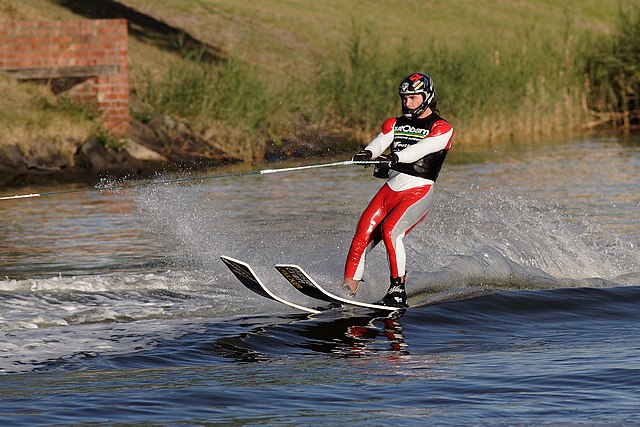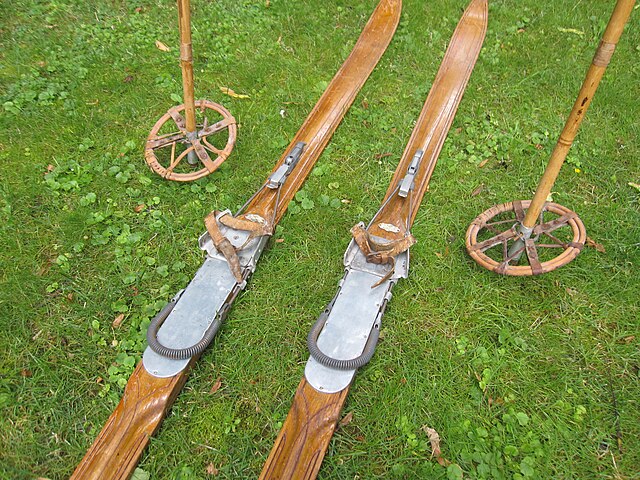Water skiing is a surface water sport in which an individual is pulled behind a boat or a cable ski installation over a body of water, skimming the surface on two skis or one ski. The sport requires sufficient area on a stretch of water, one or two skis, a tow boat with tow rope, two or three people, and a personal flotation device. In addition, the skier must have adequate upper and lower body strength, muscular endurance, and good balance.
Water skiing on the Yarra River in Melbourne
Water skiers performing at Sea World on the Gold Coast, Queensland, Australia
Water skiers rising out of the water in Melbourne
A privately owned, artificial water ski lake commonly referred to as Chantalyy Lakes By The Cliff Side, located near Orangeville, Ontario, seen with a slalom course and jump ramp
A ski is a narrow strip of semi-rigid material worn underfoot to glide over snow. Substantially longer than they are wide, and characteristically employed in pairs, skis are attached to ski boots with ski bindings, with either a free, lockable, or partially secured heel. For climbing slopes, ski skins can be attached at the base of the ski.
A shaped alpine ski with relatively little sidecut and classic camber: the tip and tail touch the snow while the midsection is in the air.
Old skis
Asymmetrical skis used by the Danish-Norwegian army in the 18th century, long ski for the right leg, also shown in profile (far left).
Wooden skis with cable (kandahar) bindings and bamboo poles








